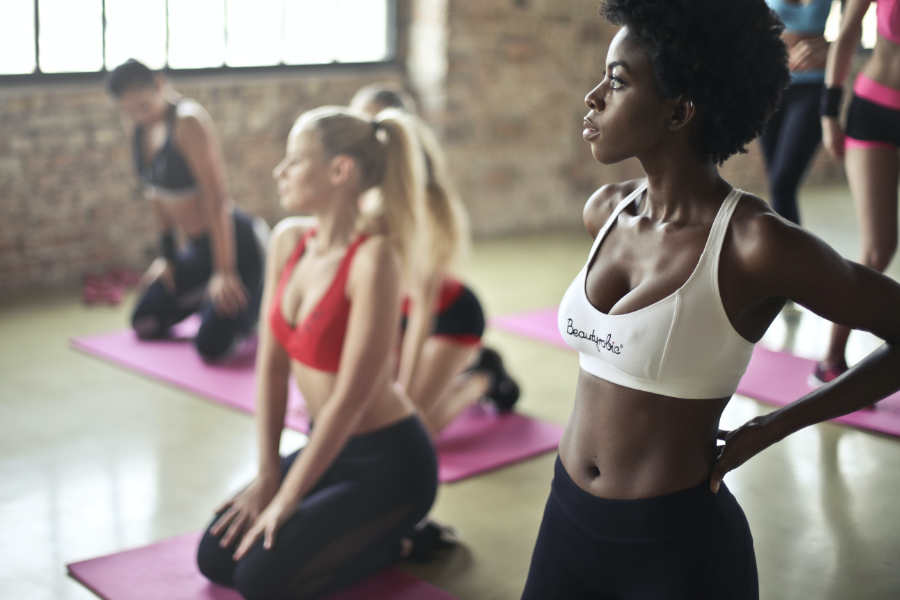The more you move and more active you are, the more you exercise and the fitter you are, the healthier you’ll be and the longer you’ll live. Slightly over simplified, but you get my point!
Whether you’re currently fit and healthy, or are less fit and healthy, increasing movement, exercise and fitness, will generally improve your health and life span.
Diet and exercise are the two most potent levers for optimising health, so much so that the combination of diet, physical activity and weight loss, effectively reverses type 2 diabetes (1). This article focuses on how exercise can prevent and reverse type 2 diabetes, which exercise type is best and how to set yourself up for success!
Benefits of exercise for type 2 diabetes
Type 2 diabetes is due to impaired secretion of insulin, usually in combination with insulin resistance. It results in not being able to keep blood sugar (glucose) levels in the normal range and subsequent high blood glucose levels (hyperglycaemia). Achieving and maintaining healthy blood glucose levels is integral for treating type 2 diabetes and in preventing or delaying complication, such as cardiovascular disease (2).
The implementation of an effective nutrition and exercise program combined with weight loss can treat and/or reverse type 2 diabetes (2).
Exercise is a planned physical activity, for example a run, cycling, the gym, whereas physical activity is any general activity, such as walking to the shop, hoovering, gardening. Aerobic exercise examples are walking, running, cycling, dancing and resistance exercise examples are bodyweight exercises (lunges, squats, press ups), lifting free weights (dumbbells, kettlebells) and weight machines.
Exercise to prevent type 2 diabetes
Regular physical activity and exercise can prevent or delay the onset of type 2 diabetes: it markedly improves blood glucose control, increases insulin sensitivity and increases the health of cells – specifically the power-house of the cell, called the mitochondria (3). Higher levels of physical activity and exercise are associated with reduced risk for type 2 diabetes and independent of weight loss, reduce the risk of type 2 diabetes (2). The greater the amount of physical activity and exercise, the better the prevention. However, even walking briskly for 30 mins daily is associated with decreasing risk for type 2 diabetes (2).
Exercise to reverse type 2 diabetes
Improved blood glucose uptake
Both aerobic and resistance exercise improve the uptake of glucose in the muscles, through both insulin and insulin independent mechanisms. For glucose to be taken up by the muscles, there need to be transporters for the glucose to move from the bloodstream into the muscle. Exercise causes these transporters to be present just like insulin does. Long-term effects of exercise results in more robust benefits – for example, there starts to be changes to the expression of the genes your body makes to improve glucose uptake.
Improved insulin sensitivity
Both aerobic and resistance exercise improve insulin action, reducing insulin resistance. Long-term exercise results in greater benefits.
Enhanced capacity to oxidise fat
Type 2 diabetes is associated with reduced capacity to oxidise fat which increases insulin resistance and impairs health. Aerobic exercise increases the capacity to oxidise fat and therefore improves this. More consistent and regular exercise results in beneficial changes taking place at the level of your gene expression! Also, a good way of reducing fat levels which helps!
Enhanced cellular health
Type 2 diabetes is associated with impaired functioning of the part of the cell called the mitochondria, where energy is generated. Regular and consistent aerobic exercise improves the health of current mitochondria as well as growing new healthy ones! This is crucial since the mitochondria are imperative to health.
Fat loss and weight maintenance
A combination of diet and exercise is optimal for fat loss and maintenance. Reducing fat loss is the factor most associated with type 2 diabetes reversal (4). However, following fat loss, weight maintenance is essential. Resistance exercise is an important tool to assist with this since it increases muscle mass, improving body composition and increasing resting metabolic rate – so you burn more energy even when you’re not working out!
Reduced mortality and cardiovascular risk
Increases in physical activity and fitness are associated with longer lifespan in both a healthy and diseased state. Cardiovascular specific mortality risk and all-cause mortality risk is significantly higher (2-6.6 times) in less fit subjects with type 2 diabetes, with the fittest subjects showing the least risk (2).
Better psychological well-being
Enhanced physical fitness is associated with improvements in quality of life, well-being and reduced symptoms of depression. Regular exercise substantially decreases depressive symptoms and depression is more common in type 2 diabetes (2).
Aerobic exercise may also reduce systolic blood pressure and levels of low-density lipoproteins, both risk factors for type 2 diabetes (2). Check out Introduction to insulin, insulin resistance and type 2 diabetes to learn more!
Best exercise for type 2 diabetes
A combination of both aerobic and resistance exercise! Importantly pick things you enjoy; this will aid compliance and consistency over a more sustained period of time.
Exercise recommendations for type 2 diabetes
Aerobic Exercise
5 x 30 min sessions of moderate activity per week, for example a brisk walk (40-60% VO2max). Or 3 / 4 sessions of more vigorous exercise per week (>60% VO2 max).
Tip: implement your exercise based on your current training status, i.e. if you’re already doing 5 x 30 mins walking a week, now step this up by introducing a couple of more vigorous exercise sessions per week or add some periods of high intensity by adding in some running of hill sprints. Remember, more volume or more intensity is better in this case!
Resistance Training
2-3 times per week, including a minimum of 5-10 exercises involving the major muscle groups (upper body, lower body, core). Begin with higher repetitions and lower weights (10-15 repetitions), progressing over time to heavier weights (or resistance) that can be lifted only 8-10 times, and do 3 sets of each.
Tip: if you’re gym or weight phobic, start off with simple body weight exercises like squats and press ups at home. Set yourself a goal, for example, every time you make yourself a cup of tea do 15 reps of squats, lunges and press-ups. Then you can progress to using kitchen items for weights whilst you wait for your dumbbells to be delivered!
Set yourself up for success
Collaborate with a healthcare professional
Working with a healthcare professional, markedly increases rates of success, especially when you are starting out. Goal setting, regular monitoring and reviewing, as well as frequent contact, encouragement and support are critical in successfully reaching outcomes. A qualified health coach/exercise trainer/ nutritionist with training expertise, can design and deliver a program that is optimal for your needs and preferences, whilst supporting you on your journey.
Social support for goals and exercise
Access support and accountability from your health coach and friends / family. Social support massively increases the likelihood of meeting exercise and physical fitness goals. Is there someone you can share your goals with to increase accountability? Also consider joining a group fitness class or taking up a sport – whether online or in person – the value of community cannot be understated. It’s great to share the experience of working out with others, it makes it even more enjoyable and can be a great way to meet new people.
Enjoy it
You are far more likely to stick to what you enjoy! As well as the fact that exercise should be enjoyable, (maybe not always and obviously at times it will be challenging) you need to know that there really is a form of physical activity / exercise out there for you. If you’re not sure, try out a class – there are lots of online classes/apps that have a free introductory period where you can see what takes your fancy.
SMART goals
It’s much easier to get somewhere if you know where you’re going, yes goals! Set Specific Measurable Achievable Realistic Timeframe goals. For example, I will do the X workout from the Nike app on Monday, Wednesday and Friday at 12.30 in my lunch break in my living room.
Commit 100%
Expect there to be times that you may not want to workout but know that you will still do it regardless. It will get easier. Plus, I guarantee, you will never regret doing a workout – you will only regret not doing it. Start off small, with achievable goals. Once you get the momentum going, you’ll be on your way.
Take home messages
Physical activity and exercise are critical in preventing, treating and reversing type 2 diabetes: and along with diet and weight loss they are the most effective combination. However, even independent of weight loss, physical activity is beneficial. It’s key to remember that it is physical activity AND exercise – so have a goal for exercise AND a goal for physical activity – how about a daily 10,000 steps? Sure you’ve got a pedometer on your phone…
A combination of aerobic and resistance exercise is optimal for type 2 diabetes: as well as being optimal for general health! It’s the best way to improve insulin sensitivity, metabolic health, lose weight and maintain the weight loss. Set yourself some SMART goals now!
Start now: don’t wait until tomorrow. When you finish reading this, make a start – whether that is 10 mins of squats, lunges and press ups, getting out for a walk/run/cycle, downloading a new fitness app and starting the free introductory trial, or calling up that health coach you’ve been wondering about in order to find out about getting some support on your journey. Start now and take a step ☺
If you enjoyed this article, you may also enjoy the following related articles:
- Introduction to insulin, insulin resistance and type 2 diabetes
- Improve insulin sensitivity with these exercise tips
Contact Steve Grant Health
To learn more out how Steve Grant Health can assist you on your journey, please fill out the enquiry form below.
If you have been referred by a clinician, please complete the form and ensure that you state who has referred you or have your practitioner email Steve direct to make a referral that way.
Click the button below to open the client enquiry form:
[widgetkit id=”643″]
References
- Nathan et al. (2007). Impaired fasting glucose and impaired glucose tolerance.
- Colberg et al. (2010). Exercise and type 2 diabetes. The American college of sports medicine and the American diabetes association: joint position statement.
- Gillen et al. (2016). Twelve weeks of sprint interval training improves indices of cardiometabolic health similar to traditional endurance training despite a five-fold lower exercise volume and time commitment
- Hallberg et al. (2019). Reversing type 2 diabetes: a narrative review of the evidence
- Gaal et al. (2015). Weight management in type 2 diabetes: current and emerging approaches to treatment


